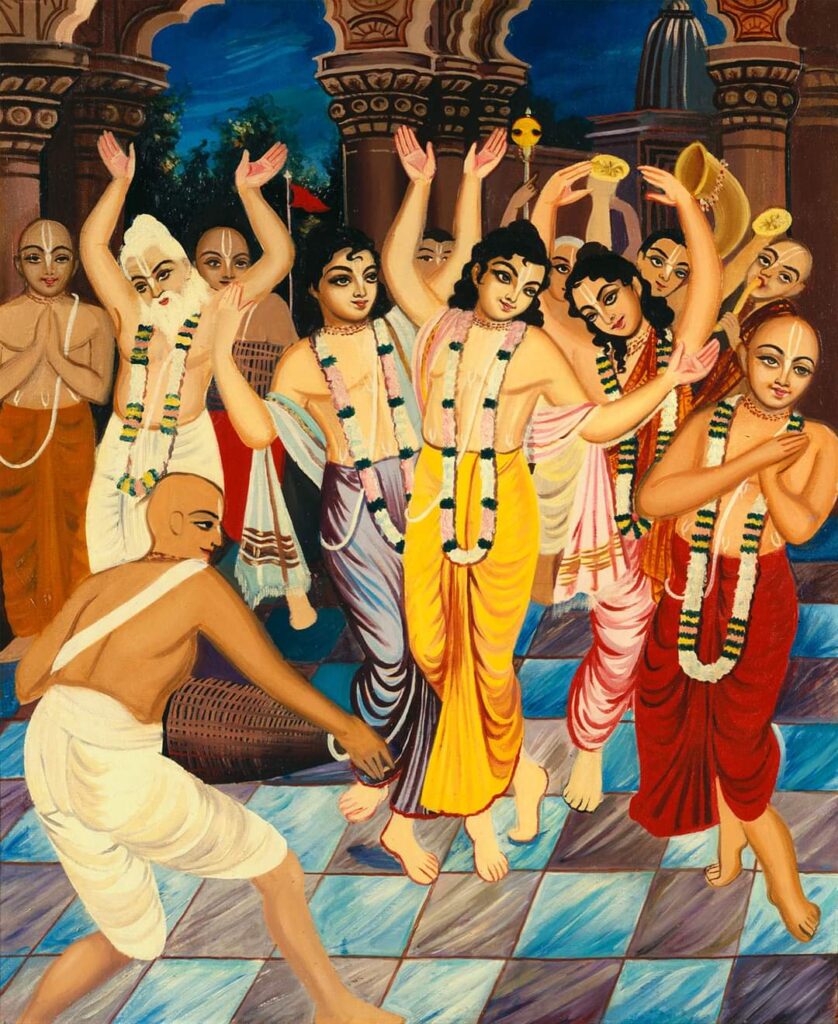During our youth, we are usually strongly influenced by the mode of passion. We want to change the world, fight injustice, make society better, or simply change things to our liking. Youths are a transforming force in any society, which can lead to positive or negative changes, depending on how it’s directed.
When Prabhupada came to the West, the youth was very much dissatisfied with the materialistic culture of their parents, which led to the counterculture and the hippie movement. Srila Prabhupada expertly directed this transforming force and used it to create the Krsna Conscious movement, which brought some very positive changes to society. Suddenly, instead of just breaking social norms and looking for an escape through intoxication, young people started to reform themselves and enthusiastically transform society by broadcasting Krsna Consciousness through book distribution and other means. In this example, we can see how the same force when properly directed can lead to a completely different result.

This same tendency can be noticed today but in the other direction. The younger generation in our movement has the same transforming force, they are dissatisfied with the status quo and want change. However, in many cases, this energy is not being properly used. As a result, some go outside, and just join the materialistic society, while others become a destructive force inside our movement, trying to destroy what is in place without having a clear idea of what to build instead.
This is one point that represents a risk for our movement. Our movement started as a revolutionary society, that rebelled against the status quo, aiming for a life different from the materialistic lifestyle pursued by general people. Over time, however, we became more lax, and the revolutionary roots were largely lost.
Although we collectively evolved in many aspects, we became again largely part of mainstream society. We now mainly offer a pious version of the same materialistic lifestyle that everyone else is living, based on just maintaining the status quo. In one sense this sense of stability is good and necessary, but on the other hand, it’s far from ideal and is largely not very attractive for the new generation who need something to fight for.
The ideal would be to somehow combine maturity and stability with dynamism, offering again a real alternative to materialistic society, something we would be inspired to not only practice ourselves but to go out and offer to others.
In this situation, intelligent and charismatic devotees, who can cultivate the youth and use their transformative energy for good causes are desperately needed. Srila Bhakti Thirta Swami, for example, was, at his time propagating the concept of “Spiritual Warrior”, the idea of going deep into spiritual life, trying to first reform ourselves, and then going out to offer the same transformative process to others. His idea was not based on confrontation (raja-guna) but on peaceful transformation. This is one example of an idea that can allow us to combine maturity and stability with a revolutionary pursuit that can engage our new generation in positive transformational ways, as well as take the elders out of their comfort zone and make them again enthusiastic about spiritual cultivation.
We can’t expect that the young generation will be happy just chanting their rounds and spending their days peacefully worshipping the deities. They need a cause, a revolution to fight for. Their energy can be used to do kirtan, embrace digital activism, save the cows, feed the hungry, or simply try to make the whole world Krsna Conscious. If a higher cause is not offered, however, their energy may manifest in negative ways and this can, in the worst case, lead to a collapse in our movement in the following decades.
